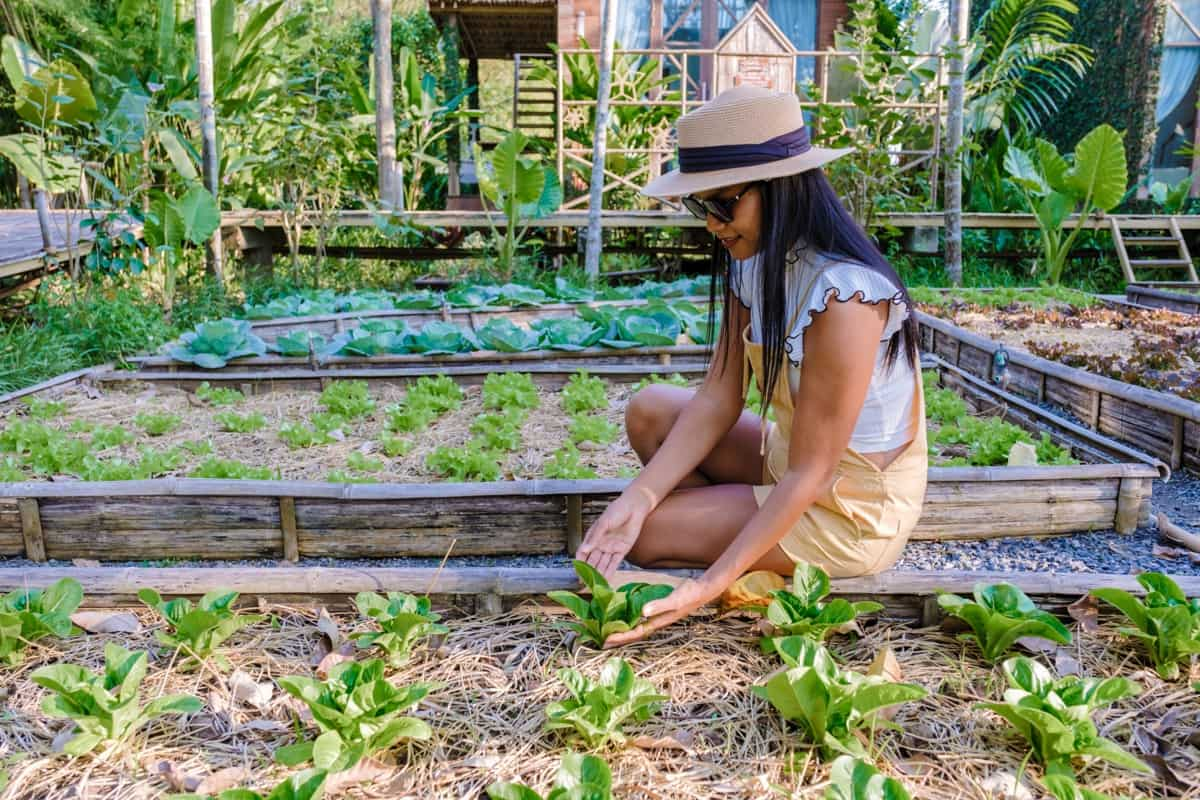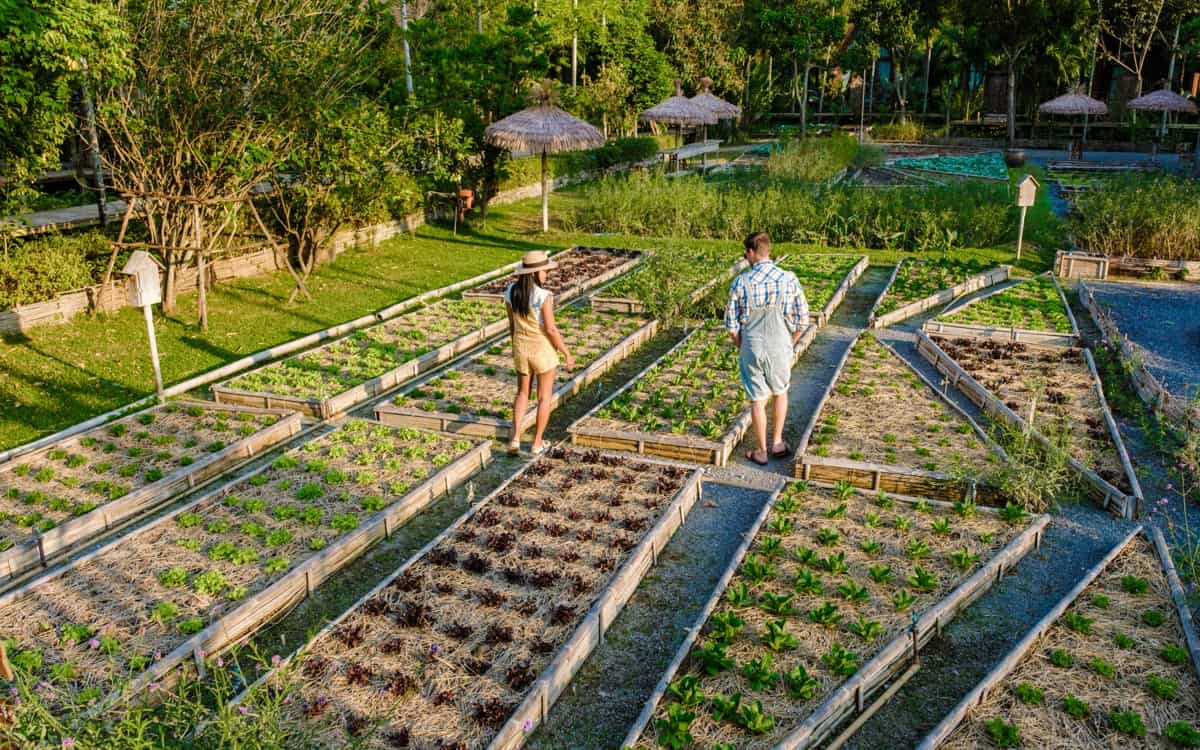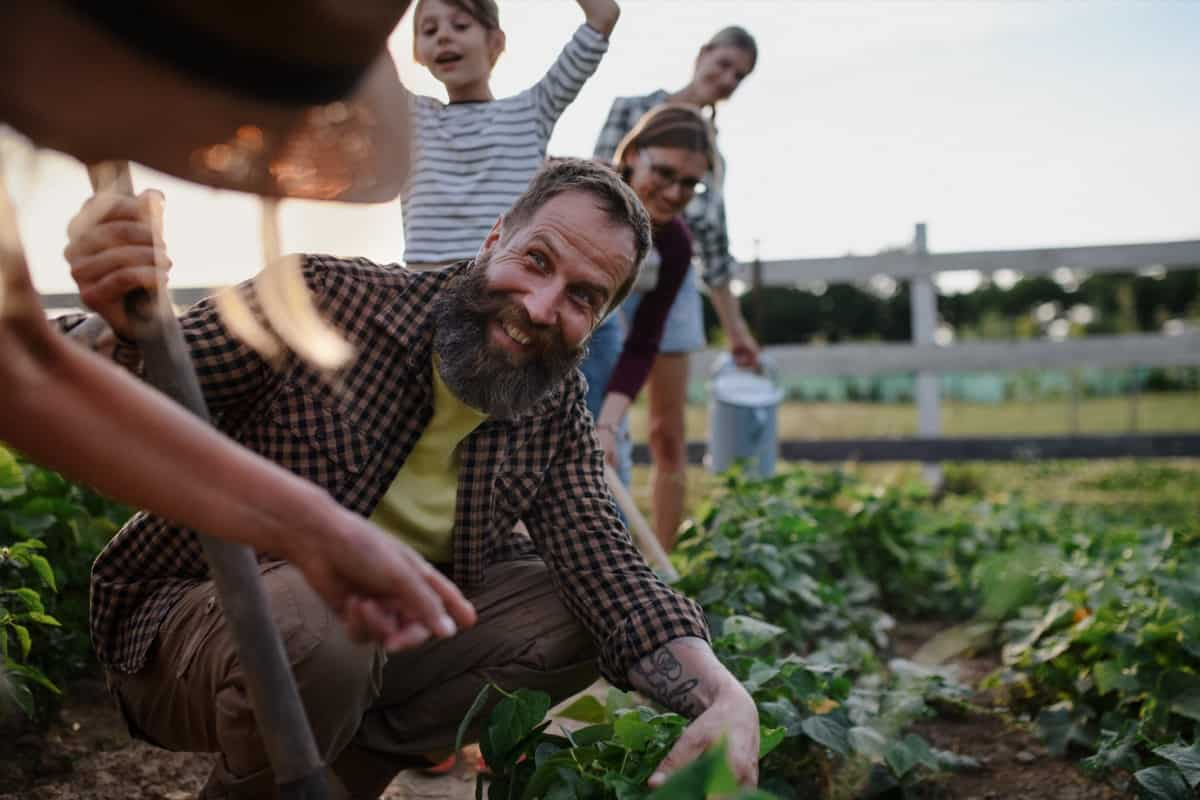A community garden is a shared space for people to grow fruits, vegetables, and flowers. These gardens can provide numerous benefits, including promoting healthy eating, fostering social interaction, and contributing to a more sustainable environment. Below we learn creating a successful community garden, from initial planning to ongoing maintenance.

How to Create a Community Garden
Assess Community Interest and Gather Support
Begin by talking to your neighbors, friends, and family members to gauge their interest in participating in a community garden project. Organize a community meeting to discuss the idea and gather input from potential participants. This initial stage is crucial in garnering support and ensuring enough committed members to help maintain the garden.
Identify and Secure a Suitable Site
Once you have gathered enough support, the next step is to identify a suitable location for the garden. Look for a space with adequate sunlight, easy access to water, and fertile soil. It is also essential to consider the site’s proximity to the homes of the garden’s members, as this can impact participation rates. Once you have identified a potential site, contact the landowner to secure permission to use the space for a community garden. Be prepared to present your proposal, including the benefits of having a community garden and how it will be maintained.
Form a Garden Committee and Establish Rules
To ensure the smooth running of the community garden, it is essential to form a garden committee with dedicated roles and responsibilities. This committee will help decide the garden’s design, funding, and maintenance. Establishing a clear set of rules and guidelines for members to follow is also crucial. These rules should cover membership fees, work expectations, and garden etiquette.
Design the Garden Layout
The next step is to design the garden layout, considering the members’ needs and preferences. Consider the types of plants that will be grown, the amount of space required for each plant, and the overall layout’s aesthetic appeal. Ensure that the design includes pathways for easy access, communal areas for gathering and socializing, and adequate space for each member to cultivate their plot.
Acquire Funding and Resources
Creating a community garden can require a significant investment in materials, tools, and ongoing maintenance. As such, seeking funding and resources to support the project is essential. This may involve applying for grants, soliciting donations from local businesses, or organizing fundraising events. In addition, consider partnering with local schools, community organizations, or government agencies to access additional resources and support.
In case you missed it: Top DIY Cottage Style Garden Ideas

Prepare the Site and Build the Infrastructure
Once you have secured funding and resources, it is time to prepare the site and build the necessary infrastructure. This includes clearing the land, improving the soil, installing irrigation systems, and constructing raised beds or other planting structures. Creating communal spaces such as seating areas, tool sheds, and composting facilities is also essential. Engage the garden’s members in this process, as this can help foster a sense of ownership and pride in the project.
Plant and Maintain the Garden
With the site prepared and infrastructure in place, it is time to plant the garden. Organize a planting day to bring the community together and get everyone involved. Be sure to follow the garden design and plant according to the specific needs of each crop, such as spacing, sunlight, and water requirements. Once the garden is planted, it is crucial to establish a maintenance schedule to ensure its ongoing success. This includes tasks such as watering, weeding, and pest control.
Engage the Community and Promote the Garden
A successful community garden relies on active participation and ongoing support from its members and the broader community. To foster this engagement, organize events and activities that promote the garden and encourage community involvement. Examples include workshops on gardening techniques, cooking classes using produce from the garden, and harvest festivals to celebrate the garden’s success. Additionally, consider partnering with local schools or youth organizations to provide educational opportunities and engage younger community members.
Evaluate and Adapt
As with any project, it is essential to regularly evaluate the community garden’s progress and make adjustments as needed. Solicit feedback from garden members and the broader community to identify areas of success and areas that may need improvement. Use this feedback to inform decisions about the garden’s design, programming, and management. Be prepared to adapt the garden over time to meet better the needs and preferences of its members and the community.
Ensure Long-term Sustainability
To ensure the community garden’s long-term success, planning for its ongoing maintenance and sustainability is crucial. This includes securing funding and resources for the garden’s upkeep and working to maintain strong community support. Encourage garden members to take on leadership roles within the garden committee, ensuring a pipeline of dedicated individuals to manage the garden in the future. Additionally, consider partnering with local organizations or government agencies to secure ongoing support and resources for the garden.
Enhance Biodiversity and Promote Sustainability
To create a more sustainable and environmentally-friendly community garden, consider incorporating practices that enhance biodiversity and promote ecological balance. This can include planting various native plants, creating a habitat for beneficial insects and pollinators, and using organic gardening methods. Additionally, implementing water-saving techniques such as rainwater harvesting, drip irrigation, and mulching can help conserve resources and support the garden’s long-term sustainability.
Encourage Skill-Sharing and Learning Opportunities
A community garden can be an excellent platform for skill-sharing and learning among its members. Encourage experienced gardeners to share their knowledge and expertise with newer members, fostering a sense of camaraderie and mutual support. Organize workshops and training sessions on various gardening topics, such as composting, pruning, and organic pest control, to help members improve their gardening skills and contribute to the garden’s success.
In case you missed it: How to Create a Sustainable Spring Vegetable Garden: A Step-By-Step Guide

Conclusion
Creating a community garden can be rewarding and fulfilling, bringing together people from diverse backgrounds to work towards a common goal. Remember that a community garden is a living, evolving project that requires ongoing care and attention. With dedication and commitment from its members, a community garden can become a thriving, vibrant space that benefits its members and the broader community for years to come.
- Feed Your Flock for Less: Top 10 Tips to Save on Chicken Feed
- Ultimate Guide to Ossabaw Island Hog: Breeding, Raising, Diet, and Care
- Hatching Answers: The Top 10 Reasons Your Chickens Aren’t Laying Eggs
- Eggs and Economics: Breaking Down the Cost of Raising Backyard Chickens
- Defend Your Greens: Proven Methods to Keep Iguanas Out of Your Garden
- Ultimate Guide to Cinnamon Queen Chicken: A Comprehensive Guide for Beginners
- Ultimate Guide to California Tan Chicken: Breeding, Raising, Diet, Egg-Production and Care
- Ultimate Guide to Marsh Daisy Chicken: Breeding, Raising, Diet, and Care
- 10 Types of Chicken Farming Businesses You Can Start for Profits